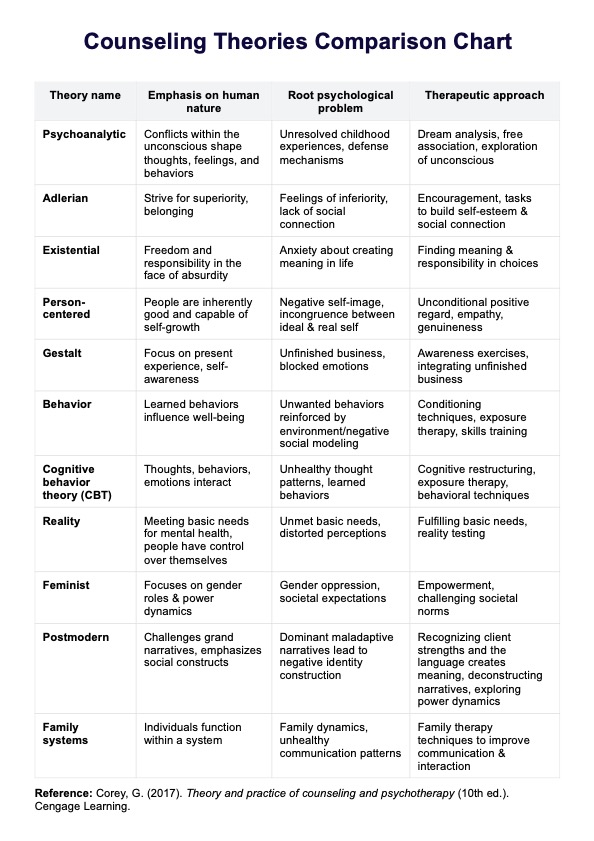Counseling theories differ in their foundational principles, techniques, and approaches to therapy. Each theory offers a unique perspective on human behavior, mental health, and the therapeutic process. For example, humanistic counseling theories emphasize personal growth and self-actualization, while cognitive behavioral therapy focuses on changing negative thought patterns and behaviors.

Counseling Theories Comparison Chart
Use this Counseling Theories Comparison Chart to differentiate counseling theories and select approaches that can work best for each unique client.
Counseling Theories Comparison Chart Template
Commonly asked questions
The most effective counseling model depends on the context and clients' needs. There is no single "best" approach in counseling, and practitioners often integrate elements from different models to create a personalized treatment plan. Some prominent counseling models in clinical practice include humanistic, cognitive, behavioral, psychoanalytic, constructionist, and systemic approaches.
Theories play a fundamental role in counseling. They provide a conceptual framework for understanding human behavior, mental health issues, and effective therapeutic interventions. They guide practitioners in assessing clients' needs, formulating treatment plans, and implementing evidence-based practices.
EHR and practice management software
Get started for free
*No credit card required
Free
$0/usd
Unlimited clients
Telehealth
1GB of storage
Client portal text
Automated billing and online payments











